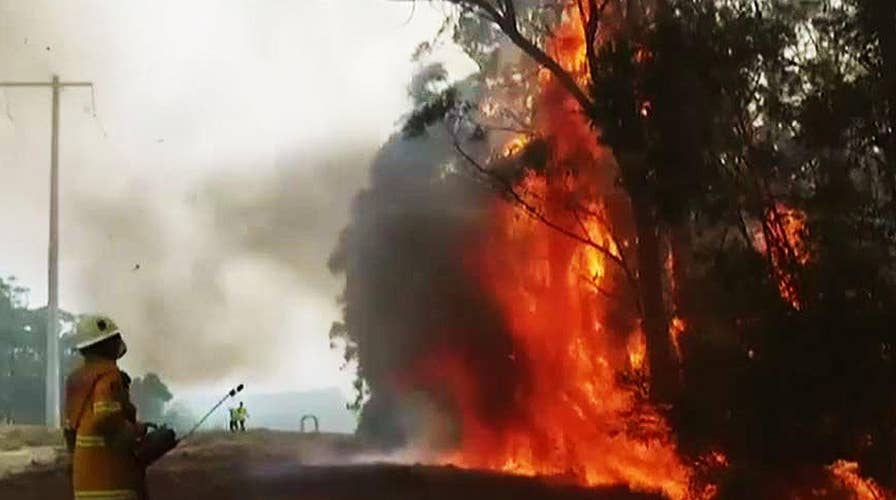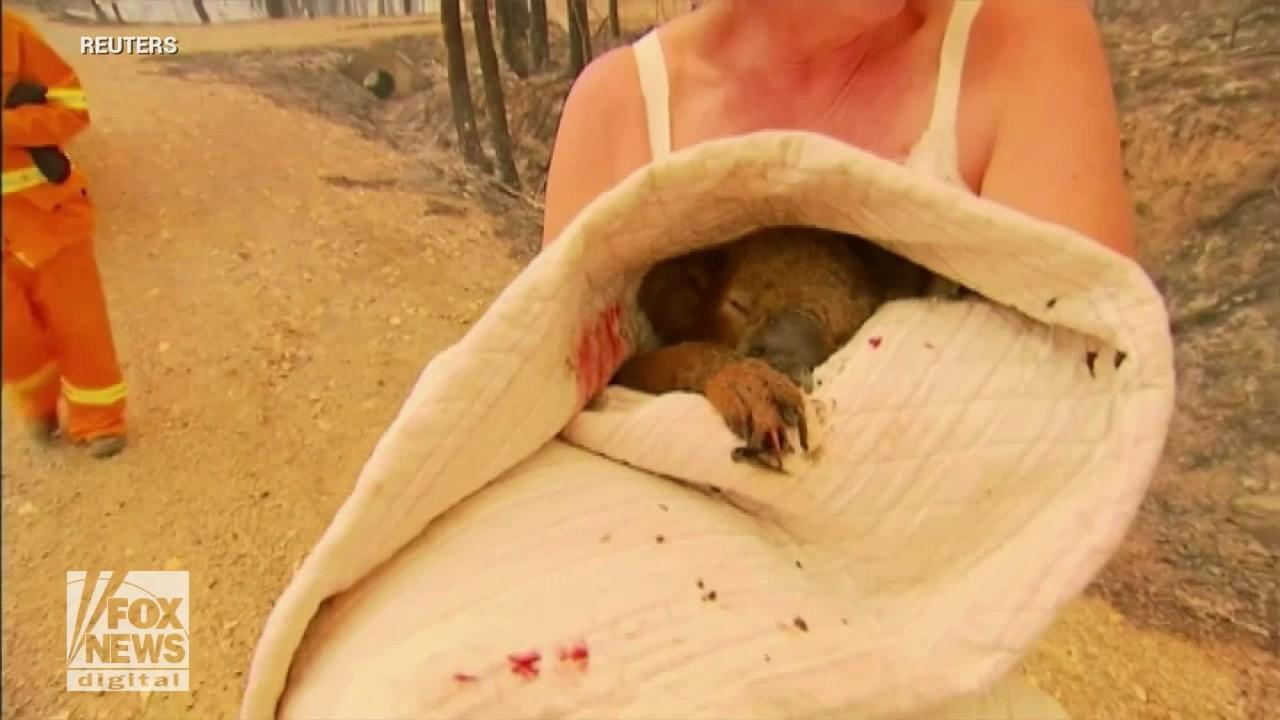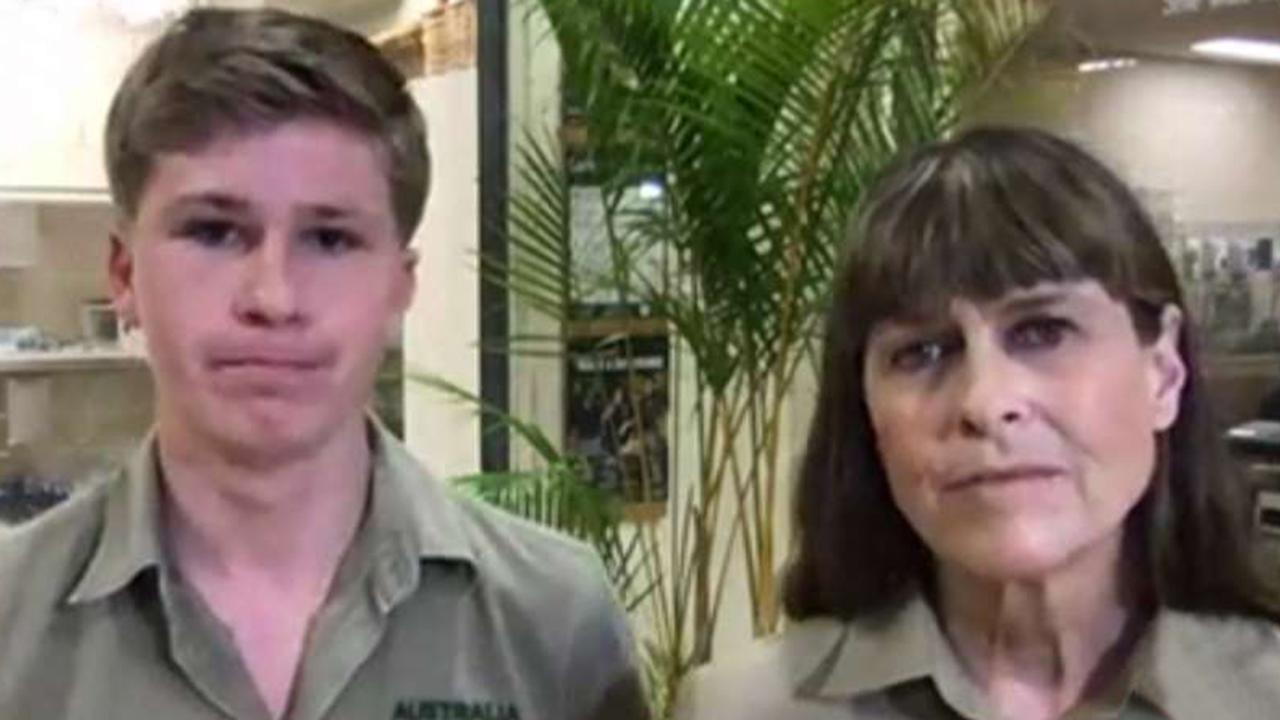US firefighters returning the favor in Australia
American firefighters travel to Australia to help fight the bush fires after Australia firefighters helped battle California's wildfires in 2018; Anna Kooiman reports from Sydney.
The sky finally cracked open atop much of the fire grounds in NSW, Australia this week – the welcome deluge slashing the number of burning fires to below 100 for the first time in more than a month.
But the challenge is far from over as the finger-pointing game ignites.
Much of the international attention – from Hollywood to political leaders alike – have focused on the fires as being the perils of climate change, and the nation’s ineffective policies in combating the globally pressing issue.
Russell Crowe has avowed that “the tragedy unfolding in Australia is climate change-based" and Cate Blanchett stressed that “when one country faces a climate disaster, we all face a climate disaster, so we’re in it together." Meanwhile, scores of others, from Metallica and Pink to Elton John and Chris Hemsworth, have dug deep into their pockets and donated to those endeavoring to combat the infernos.
Yet authorities say it was a perfect storm of disturbing factors.
“There are many reasons for the fires starting,” Paul Baxter, Commissioner of Fire and Rescue NSW and President and Board Chair of the Australasian Fire and Emergency Services Authorities Council (AFAC), told Fox News. “Some have been natural – lightning – and some have been caused by human, both maliciousness and carelessness.”
Baxter also pointed to Australia’s habitat as being ripe for such a disaster.
“The widespread nature of bushland in Australia, the readiness of plant materials to ignite and propagate fire spread so easily and the fact that fire is a very well-known and historical factor of the Australian landscape, being a necessary factor of forest health and growth,” he said.
AUSTRALIA WILDFIRE AREAS MAY SEE THUNDERSTORMS, HEAVY RAIN AS SMOKE IMPACTS AUSTRALIAN OPEN
NSW Rural Fire Service (RFS) has stated that the largest conflagrations were enkindled by dry lightning, essentially lightning storms without rain. And some victims and analysts have bemoaned calls to address climate changes as secondary to fixing what they consider to be a broken system.
“Climate change has brought bountiful rains throughout most of the past two decades, which have suppressed wildfires and allowed for more vegetation growth. That is a good thing,” said James Taylor, Director of the Arthur B. Robinson Center for Climate and Environmental Policy at The Heartland Institute. “However, Australian government policies that discourage or prohibit prescribed burns and other proactive land management have meant that when we finally have a dry year, there is more fuel for the fires, less management of the vegetation that fuels the fires, and a greater chance of wildfires burning out of control.”

Kylie Jenner posted this photo to her Instagram story in order to draw awareness to the Australian wildfires. (Kylie Jenner/Instagram)
Baxter asserted that it was clear to him that “climate has an impact on the current situation.”
“Regardless of the reasons for climate change, we all know from the facts that the climate is changing,” he said. “We have longer, hotter, and drier fire seasons. The winters are shorter, meaning that the hazard reduction or 'prescribed burning’ is much shorter, and we have less days to get the required burning done.”
NEWS CORP ANNOUNCES MAJOR DONATION FOR AUSTRALIAN BUSHFIRE RELIEF
Prescribed or hazard reduction burning refers to deliberate, monitored fires conducted during off-seasons, aimed at clearing out flammable materials from precarious terrain. It is regulated and administered by agencies at a state level, such as park authorities or environmental bodies. Eucalyptus trees, an Australian bushland staple, are also known to be especially flammable.
The likes of Collen Jackson, a 46-year-old farmer in the town of Benembra, see “environmentalists” as problematic catalysts in obstructing hazard reduction.
“The traditional owners of this land have used circle burn techniques for thousands of years to control the build-up of hazardous material – leaf matter, bark, fallen dead wood, low bushy trees. These circle burns allowed animals to escape the fire and, at the same time, cleaned up the forest floor to remove fuel for a wildfire,” she said. “This type of burning has been refused by the government due to environmentalist pressure.”
From Jackson’s lens, this has allowed “almost 30 years of fuel buildup on the forest floor” and thus “has made these fires uncontrollable by increasing the heat of the fires one thousandfold.”
“It’s like any fire, the less wood you add to it, the less it burns. Lightning strikes would still have ignited a fire due to dryness, but if there was no fuel on the forest floor, then the fires would not have been so ferocious,” she continued.
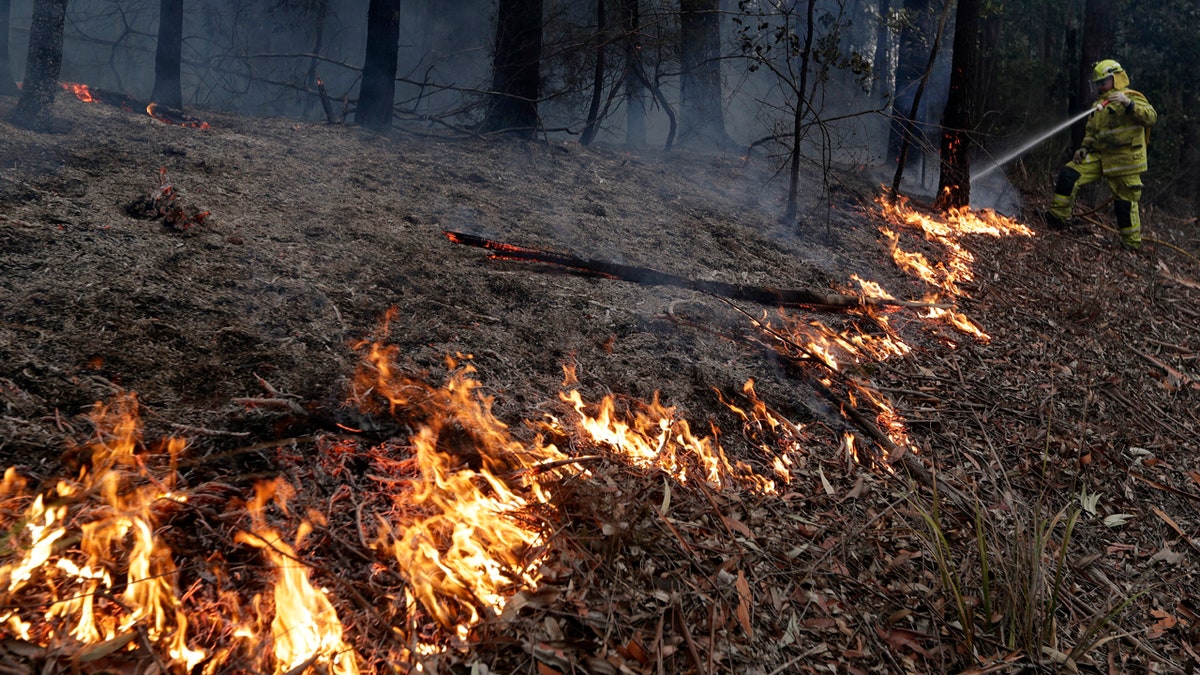
A firefighter manages a controlled burn to help contain a larger fire near Falls Creek, Australia, Sunday, Jan. 5, 2020. The deadly wildfires, which have been raging since September, have already burned about 5 million hectares (12.35 million acres) of land and destroyed more than 1,500 homes. (AP Photo/Rick Rycroft)
Others lamented hefty fines for creating unauthorized firebreaks or conducting hazard reduction without going through the permit process.
“All considered, climate change is suppressing Australian wildfires, but poor government policies, ironically supported by climate and environmental activists, are making the present wildfires worse,” Taylor conjectured.
Nationals MP Barnaby Joyce claimed on national television this year that “green caveats” hindered his team reduction burns, in essence leading to the fire crisis.
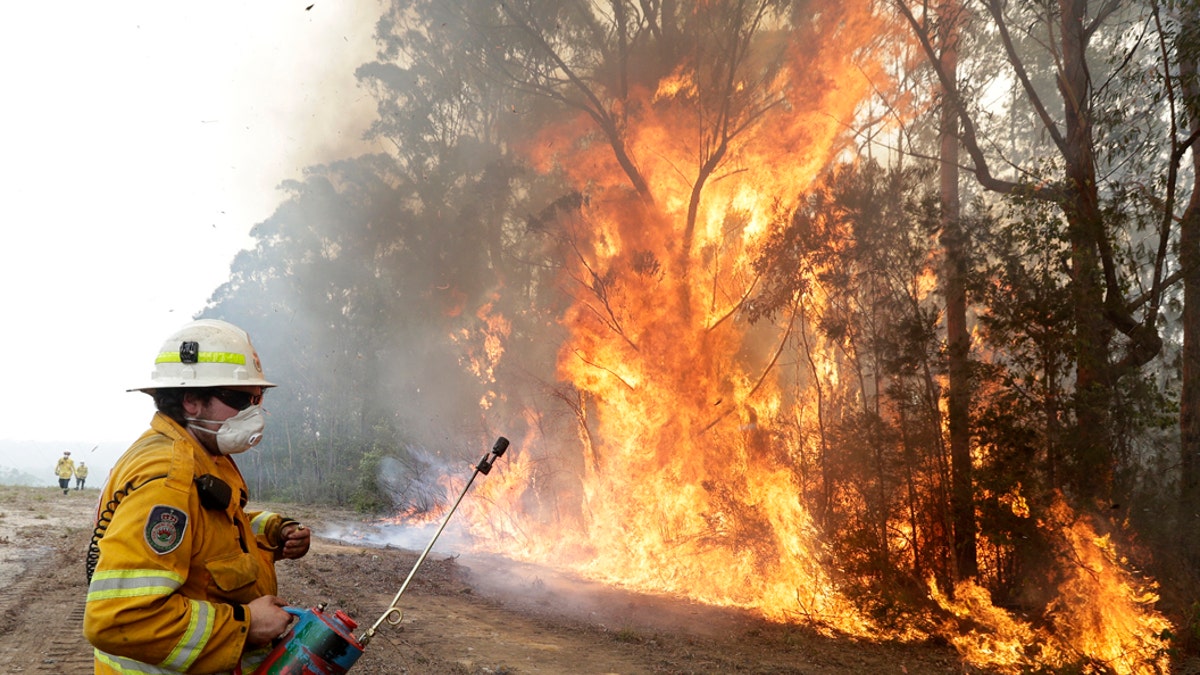
A firefighter backs away from the flames after lighting a controlled burn near Tomerong, Australia, Wednesday, Jan. 8, 2020, in an effort to contain a larger fire nearby. (AP Photo/Rick Rycroft)
However, the Australian Greens party has subsequently come out to refute such claims, stressing in a statement that they “support hazard reduction burns and back burning when guided by the best scientific, ecological and emergency service expertise.”
“The Coalition has spent six years in office ignoring the main cause of these unprecedented bushfires – severe climate change,” said the statement. “The major cause of climate change that has led to these bushfires and extremely dry conditions around the country is the mining, burning and exporting of coal, oil, and gas.”
Australia is the world’s fourth-largest producer of coal, which remains its most valuable export.
“Coal is the single biggest driver of climate change, contributing to nearly half of carbon emissions worldwide. Australia is currently the world’s largest coal exporter, which is troubling, particularly as we see governments across the world phasing out coal and financial institutions also starting to back away from financing coal,” said Julie Anne Miranda-Brobeck, communications manager for Global Witness, an NGO that endeavors to exposes natural resource corruption and human rights abuses worldwide. “Coal is simply not economically viable.”
INSIDE THE SHADOWY, UNSPOKEN WORLD OF PRISON RAPE
Conservative Prime Minister Scott Morrison has pledged to “address issues around hazard reduction for national parks, dealing with land clearing laws, zoning laws and planning laws around people’s properties and where they can be built.”
He has also underscored that there were “many contributing factors” to the mammoth blazes, including the ongoing drought and fuel loads. The federal government has requested that the parliament’s environment and energy committee initiate an investigation pertaining to land and vegetation management.
Morrison has furthermore denied accusations that he has failed to acknowledge climate change during his tenure in office. But he also has remained steadfast in protecting the coal industry and the hundreds of thousands of families who rely on it to make ends meet.
For five months, Australia has been swathed in apocalyptic scenes of seemingly eternal fires ravishing its heartland, its animals, home, and lives. So far, the blazes have killed 28 people, destroyed 2,600 homes and scorched an area of more than 25.5 million acres, roughly the size of South Korea. The cost of the damage is expected to exceed $3 billion.
ROBERT IRWIN 'ABSOLUTELY HEARTBROKEN' OVER DEVASTATING AUSTRALIA WILDFIRES
Arson, too, has played its part.
Police in New South Wales this week announced that, since the beginning of November, two dozen people have been charged with intentionally lighting fires, while 53 others have been accused of failing to comply with total fire ban regulations. A further 47 people have had legal action taken against them for dumping a burning cigarette or match on arid land.
In Queensland, law enforcement has apprehended some 101 people for igniting blazes – 69 teenagers and 32 adults – and in Victoria, some 43 have reportedly been charged.
Scientists insist that climate change has acerbated already ripe conditions for calamitous fires, while critics have contended that such devastation is nothing new to the Australian landscape.
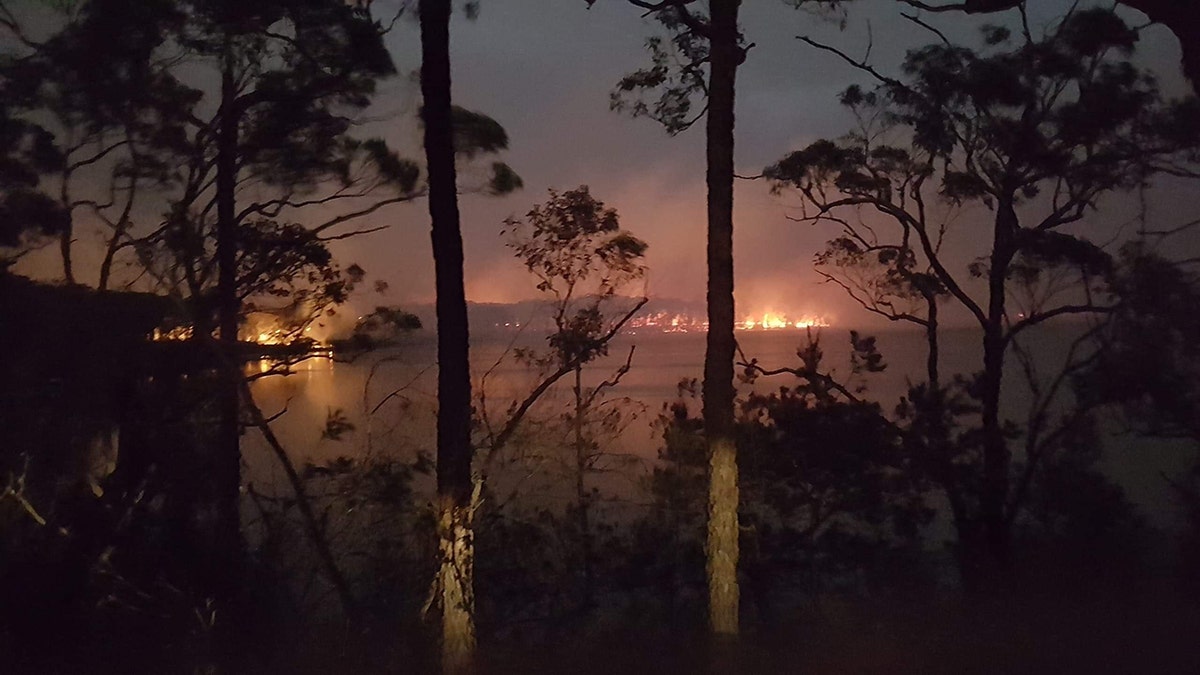
New South Wales, Australia, January 2020: Berrara during the bushfire emergency in January 2020. Extreme temperatures, dry conditions and winds have combined to cause or escalate hundreds of bushfires across five Australian states, in an unprecedented fire season.
In 2009, the infamously-named Black Fires took the lives of 173 people, and more than 2000 homes were destroyed. In 1974, some 290 million acres of land were decimated by flames across Australia’s interior. The fire season of 1966 brought with it 62 lives lost at 7000 rendered homeless as over 4000 buildings burned, and dating back to the 1800’s documentation from a single fire season highlights that 640,000 acres burned, 12 people died, and thousands of dwellings charred to the ground.
“This is not Australia’s hottest year. Nor is it Australia’s driest year. Bushfires are a common occurrence there, going back a long time,” argued Steve Milloy, publisher of JunkScience.com. “The 1939 bushfires, for example, were much worse. The most important reason for the bushfires is poor land management practices. We know that because the Aborigines have cut their fires by 50 percent because of controlled burns, as even the New York Times has reported.”
But for those most impacted by the combustion – some described shooting their animals, their faces awash with tears – skepticism remains that it will never really be over.
“The fires are still burning and will be for months. I am sitting right in the middle of the impact zone. I know my farm will be burned, I just don’t know when,” Jackson said. “The government won’t be here, and they told us that three weeks ago – we are on our own. Yet if they had spent a small amount and control-burned their land, which borders mine, the fire would not have fuel to rush at me so fast. Unfortunately, our government is controlled by the majority of voters in the city who know nothing of country life.”
